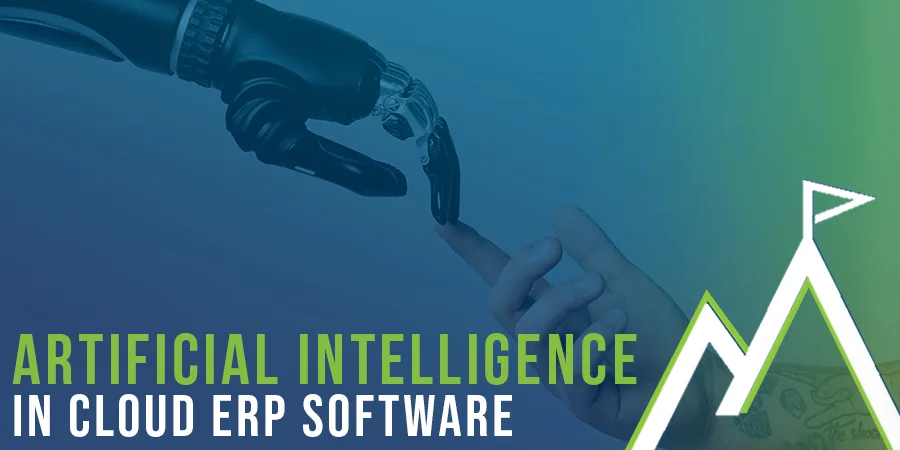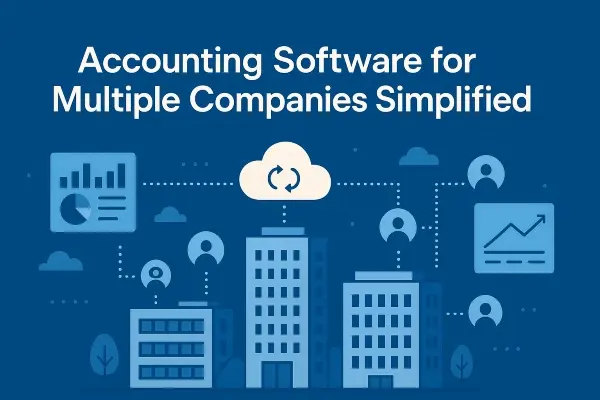Accounting Software for Multiple Businesses Simplified
Managing multiple businesses is difficult. You have separate books, manual reconciliations, and accounting software systems that don’t talk to each...
4 min read
The Milestone Team 5/12/23 7:00 AM

Table of Contents
Updated 8/8/25
AI in ERP is transforming how businesses operate and make decisions. Artificial intelligence has shifted from being a “nice to have” into a core part of ERP strategy, driving real change in how organizations manage and optimize their business processes.
Still, not everyone is quick to embrace it. Some companies hesitate to invest in AI, wondering if it’s really necessary—or if it will just add more complexity to their daily operations. But as digital transformation accelerates and traditional ERP systems age, it’s becoming clear that avoiding AI often costs more than adopting it. Companies holding on to legacy systems are finding it harder to keep up with competitors using modern ERP solutions that can adapt and scale with their business.
That’s where Acumatica Cloud ERP comes in. The 2025 releases bring modern AI capabilities right into the ERP experience—automating routine work, surfacing real-time insights, and putting powerful tools directly in the hands of everyday business users.
ERP systems have always been essential for managing business operations, but traditional ERP systems were built to record—not respond. They handled transactions, stored data, and produced reports. Useful, yes. Intelligent, not quite.
AI changes that. Instead of just compiling information, AI in ERP systems analyzes it, recognizes patterns, and recommends the next best action. It delivers real-time insights, automates routine tasks, and reduces manual effort across every department.
With built-in process automation and RPA (robotic process automation), modern ERP solutions can now handle repetitive work—data entry, invoice processing, workflow routing—freeing up employees to focus on higher-value work and strategic decision-making.
The result? Smarter decision-making and more agile business processes—without the heavy IT involvement or custom integrations many legacy systems once required.
One of the most impactful additions in Acumatica’s 2025 release is AI Studio—a low-code/no-code tool built for real business users, not just IT teams. It’s designed to make intelligent automation easy and accessible across the organization.
Why it stands out:
AI Studio is the hero feature of 2025.
Works with trusted AI providers like OpenAI, Anthropic, and others.
Fully embedded in Acumatica—not an add-on or separate module.
Ready out of the box, so teams can use it right away.
You don’t need a developer or data specialist. Just describe what you want—like “notify me when a project exceeds its budget” or “summarize today’s open sales orders”—and Acumatica builds the workflow.
This brings AI out of the back office and into daily operations, simplifying workflows, reducing manual effort, and improving collaboration across the organization.
For many organizations, Accounts Payable is one of the most repetitive and error-prone business processes. Acumatica’s AI-powered ERP automation changes that. Intelligent invoice processing automates capture, validation, and management—reducing manual effort and costly errors.
Why it stands out:
Reads vendor invoices automatically.
Extracts vendor name, amount, and line items.
Matches to purchase orders with precision.
Works globally and supports modern compliance requirements.
This is a powerful example of how modern ERP systems can turn outdated workflows into intelligent, efficient processes that save time and reduce human error.
Data tells you what happened. AI helps you see what’s next.
Acumatica’s embedded machine learning tools analyze ERP data to forecast inventory demand, project costs, and cash flow trends. They detect seasonality, highlight spending patterns, and surface predictive insights to guide planning and budgeting.
Why it stands out:
Embedded machine learning, not a separate tool.
Predicts demand, costs, and cash flow trends.
Models multiple business scenarios for better planning.
Supports confident, data-driven decision-making.
For growing businesses, that means fewer surprises and more control over what comes next.
AI in Acumatica quietly monitors your ERP systems for irregularities and risks before they escalate.
Why it stands out:
Flags duplicate transactions, unusual pricing, and spending anomalies.
Strengthens financial controls and compliance.
Works globally to support modern regulatory environments.
Acts as an early warning system for your business.
It’s a built-in safeguard that reduces manual effort, improves accuracy, and gives leaders greater visibility across their operations.
In distribution and commerce, Acumatica’s AI-driven ERP software gives teams a clearer, more connected view of the supply chain from end to end. With enhanced data sharing between partners and departments, businesses can respond faster to demand and keep operations running smoothly.
Why it stands out:
Suggests cross-sell and up-sell opportunities.
Speeds up inventory lookups across warehouses.
Reduces backorders and delivery delays.
Strengthens collaboration between teams and partners.
These capabilities streamline order processing, enhance the customer experience, and give growing businesses a competitive edge.
ERP systems have long been seen as complex, but that perception is changing fast. Acumatica’s new conversational interface lets users interact with their ERP like they would with a colleague. Powered by conversational AI, it makes system interactions more intuitive, efficient, and accessible to everyday business users.
You can type or speak natural language commands like:
“Show last month’s profit by branch.”
“Approve open purchase orders.”
“List overdue invoices.”
Why it stands out:
Real-time answers without complex filters or queries.
Personalized, context-aware assistance.
Easier user adoption with the new AI-driven UI.
No heavy technical training required.
This leap in usability brings advanced ERP capabilities to more users across the organization.
Every department has its own priorities. Acumatica now lets users shape their ERP experience around how they actually work.
Controllers can track approvals and cash flow.
Project managers can monitor budgets.
Warehouse staff can view order status.
Why it stands out:
Dashboards can be tailored down to the individual user or department level.
Real-time visibility enables faster, smarter decision-making.
Intelligent data modeling keeps everything aligned with business goals.
Gives every stakeholder access to the information they need—instantly.
It’s not just a dashboard—it’s a decision hub designed to keep the business moving forward.
AI in Acumatica isn’t an add-on or a separate tool—it’s fully embedded into the platform. Features like AI Studio, AP automation, and conversational ERP come out of the box in Acumatica’s 2025 release, making advanced capabilities accessible to non-technical users from day one.
This means teams can automate workflows, surface real-time insights, and make faster, more informed decisions without relying on heavy IT support.
By moving away from traditional ERP systems that have become outdated, companies can unlock the full potential of AI-driven ERP—streamlining business processes, improving collaboration, and creating a foundation that can adapt as the business grows.
Modern ERP with AI lets you leave outdated systems behind and build your business on a platform designed for what’s next.

Managing multiple businesses is difficult. You have separate books, manual reconciliations, and accounting software systems that don’t talk to each...

Numbers only matter if you can trust them. When financial reporting changes from one period to the next, leaders are left second-guessing the data....

The skyrocketing growth of the digital landscape has left cosmetics manufacturers rushing to keep up with evolving customer demand. Customers now...